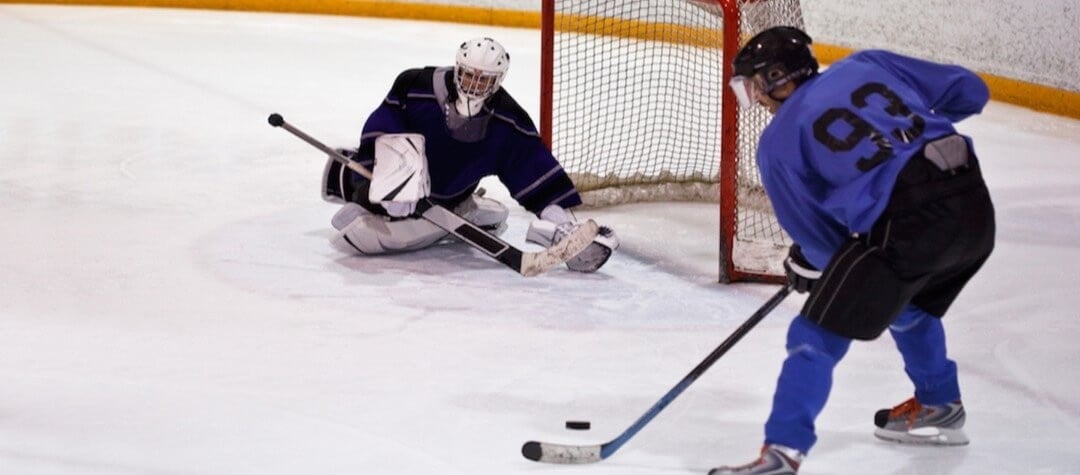Looking to get to grips with the the basic rules of ice hockey? Check out our basic guide to the rules of what is one of the fastest-flowing sports in the world.
Ice hockey face-offs
Face-offs are used to start periods of play and to restart play after a stoppage. A face-off involves two opposing players standing opposite each other at roughly one stick’s blade apart and the official dropping the puck between them. The two players then attempt to gain possession of the puck.
Object of the game of ice hockey
Simply put, the aim of ice hockey is to score more goals than the opposition by getting the puck into the opposition’s goal. A goal is scored only if all of the puck crosses the entire goal line. It’s illegal to kick the puck across the line or to volley it in, so players must use their stick to hit the puck when it’s in contact with the ice in order to score. However, deflections off other players — including the goalie (also known as the goaltender) — are also permitted as legal goals.
How long is a gamer of ice hockey?
Matches are played in three 20 minute periods. The clock is stopped every time play stops — which means every second is crucial.
Teams in ice hockey
Each team can have a maximum number of 20 players, including two goaltenders — although only six players from each team can be on the ice at any one time. Substitutions can be made at any point during the game.
The playing zones in ice hockey matches
The ice is marked with a series of red and blue lines. The red (center) line divides the ice into two halves, while the blue lines separate the ice into three equal ‘zones’: a defending zone, a neutral zone and an attacking zone.
Rules of ice hockey
There are only two basic rules in ice hockey:
Offside: If an attacking player enters the opposition’s defending zone (marked by the blue line) ahead of the puck, then he or she will be called offside. If this happens, play will be halted and a face-off will take place in the neutral zone.
Icing: ‘Icing’ refers to a player striking the puck from his or her own half past the opposing team’s goal line without it deflecting off or coming into contact with another player (including a goalkeeper). If this happens, play will be halted and the puck will be returned to where the pass originated without a goal being given.
Match officials in ice hockey games
The referee (who wears a red armband) controls the game and makes the final decision on any matter. The referee is assisted by linesmen, who are concerned with offside, and goal judges, who look to see whether or not the puck has crossed the goal line.
Physical contact in ice hockey
At the competitive level, ice hockey has earned a reputation for being an aggressive sport due to the frequent body checks and other physical contact that occurs on the ice — but it’s not just a free-for-all where players can get away with what they like. The rules state that contact from the side and front is fine, but deliberate checking (slowing or hindering an opponent) from behind will usually result in a penalty.
Tripping opponents and violently forcing players to hit the rink’s walls is banned, as is elbowing, charging, high use of the stick, and using the shaft of the stick to check an opponent. Of course, the speed of the game means that many of these things occur, and so it’s up to the referee to decide whether an offenses has been committed and whether a penalty needs to be imposed.
Penalties in ice hockey
Penalties range from minor penalties, which usually result in a player being sent off for 2 minutes, to major penalties, which are given for more serious physical contact such as fighting. A major penalty can lead to the offending player being sent off permanently.














